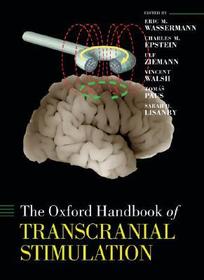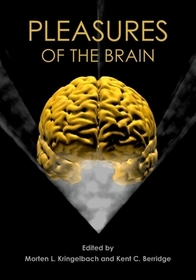
Oxford Handbook of Transcranial Stimulation
Sorozatcím: Oxford Library of Psychology;
-
10% KEDVEZMÉNY?
- A kedvezmény csak az 'Értesítés a kedvenc témákról' hírlevelünk címzettjeinek rendeléseire érvényes.
- Kiadói listaár GBP 98.00
-
46 819 Ft (44 590 Ft + 5% áfa)
Az ár azért becsült, mert a rendelés pillanatában nem lehet pontosan tudni, hogy a beérkezéskor milyen lesz a forint árfolyama az adott termék eredeti devizájához képest. Ha a forint romlana, kissé többet, ha javulna, kissé kevesebbet kell majd fizetnie.
- Kedvezmény(ek) 10% (cc. 4 682 Ft off)
- Kedvezményes ár 42 138 Ft (40 131 Ft + 5% áfa)
Iratkozzon fel most és részesüljön kedvezőbb árainkból!
Feliratkozom
46 819 Ft

Beszerezhetőség
Megrendelésre a kiadó utánnyomja a könyvet. Rendelhető, de a szokásosnál kicsit lassabban érkezik meg.
Why don't you give exact delivery time?
A beszerzés időigényét az eddigi tapasztalatokra alapozva adjuk meg. Azért becsült, mert a terméket külföldről hozzuk be, így a kiadó kiszolgálásának pillanatnyi gyorsaságától is függ. A megadottnál gyorsabb és lassabb szállítás is elképzelhető, de mindent megteszünk, hogy Ön a lehető leghamarabb jusson hozzá a termékhez.
A termék adatai:
- Kiadó OUP Oxford
- Megjelenés dátuma 2008. január 24.
- Kötetek száma Jacketed
- ISBN 9780198568926
- Kötéstípus Keménykötés
- Terjedelem768 oldal
- Méret 257x180x45 mm
- Súly 1554 g
- Nyelv angol
- Illusztrációk 8pp colour plates, numerous halftones and line figures 0
Kategóriák
Rövid leírás:
Transcranial stimulation comprises an important set of techniques for investigating brain function, some of which are showing the promise of treating disease. This book provides the definitive review of the scientific and technical background required to understand transcranial stimulation, for neuroscientists, neurologists, and psychiatrists.
TöbbHosszú leírás:
Since becoming commercially available in 1985, transcranial magnetic stimulation (TMS) has emerged as an important tool in several areas of neuroscience. Originally envisioned as a way to measure the responsiveness and conduction speed of neurons and synapses in the brain and spinal cord, TMS has also become an important tool for changing the activity of brain neurons and the functions they subserve and an important adjunct to brain imaging and mapping techniques. Along with transcranial electrical stimulation techniques, TMS has diffused far beyond the borders of clinical neurophysiology and into cognitive, perceptual, behavioural, and therapeutic investigation and attracted a highly diverse group of users and would-be users.
This book provides an authoritative review of the scientific and technical background required to understand transcranial stimulation techniques and a wide-ranging survey of their burgeoning application in neurophysiology, perception, cognition, emotion, and clinical practice. Each of its six sections deals with a major area and is edited by an international authority therein. It will serve researchers, clinicians, students, and others as the definitive text in this area for years to come.
Tartalomjegyzék:
Section I: Physics and Biophysics of TMS
Electromagnetism
TMS waveforms and current direction
TMS stimulator design
TMS stimulation coils
Magnetic field stimulation: the brain as conductor
Lessons learned from magnetic stimulation of physical models and peripheral nerve in-vitro
Direct current brain polarization
Transcranial electrical stimulation and intraoperative neurophysiology of the corticospinal tract
Section II: TMS Measures of Motor Cortical and Corticospinal Excitability: Physiology, Function and Plasticity
The size of motor-evoked potentials: influencing parameters and quantification
The cortical silent period
Paired-pulse measures
Evaluating the interaction between cortical inhibitory and excitatory circuits measured by TMS
Pharmacology of TMS measures
Transcranial stimulation measures explored by epidural spinal cord recordings
TMS measures and voluntary motor function
Changes in TMS measures induced by repetitive TMS
Neuroplasticity induced by transcranial direct current stimulation
Use-dependent changes in TMS measures
Section III: The Motor-evoked Potential in Health and Disease
The MEP in clinical neurodiagnosis
TMS in the perioperative period
TMS in movement disorders
TMS: neurodevelopment and perinatal insults
Using the TMS-induced motor-evoked potential to evaluate the neurophysiology of psychiatric disorders
TMS in migraine
Design and analysis of motor-evoked data in pediatric neurobehavioral disorder investigations
Inter- and intra-individual variation in the response to TMS
Section IV: Transcranial Magnetic Stimulation in Perception and Cognition
TMS and visual awareness
Higher visual cognition: search, neglect, attention, and eye movements
Studies of crossmodal functions with TMS
Motor cognition: TMS studies of action generation
Investigating language organisation with TMS
Higher cognitive functions: memory and reasoning
Mathematics and TMS
Section V: TMS and Brain Mapping
Combining brain imaging with brain stimulation: causality and connectivity
TMS and position emission tomography: methods and current advances
Concurrent TMS and functional magnetic resonance imaging: methods and current advances
TMS and electroencephalography: methods and current advances
Section VI: Therapeutic Applications of TMS
Therapeutic potential of TMS-induced plasticity in the prefrontal cortex
Methodological issues in clinical trial design for TMS
TMS in the treatment of major depressive disorder
TMS in bipolar disorder
TMS clinical trials involving patients with schizophrenia
TMS in the study and treatment of anxiety disorders
Movement disorders
Brain stimulation in neurorehabilitation
TMS and pain






